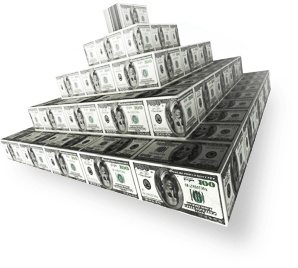Contents
The floating exchange rate came around after the collapse of the Bretton Wood agreement which fixed the US dollar to gold. The central bank is not tied its economic policies to trading partners’ policy, for example, in determining interest rates. If, for example, it is determined that the value of a single unit of local currency is equal to U.S. $3, the central bank will have to ensure that it can supply the market with those dollars. In order to maintain the rate, the central bank must keep a high level of foreign reserves. On the other hand, a stable currency allows consumers to buy more.
- To purchase French pastries, the Saudis pay less than they did before thedollar strengthened.
- As such, more jobs can be generated through auto-corrections in the market.
- Government can interfere when the currency price is too high or too low to keep the currency at a favorable price.
Lastly, some countries, like the United States, have allowed an almost pure float with central bank interventions only on rare occasions. The floating exchange rate regime makes the currency more volatile. Fluctuations bring instability in the economy and uncertainty in the economic decision by economic agents.
Advantage of Floating Exchange Rates:
A fixed-rate system usually means that the currency is pegged to another currency. This creates stability for businesses and investors because they know what their currency will be worth in terms of other currencies. This prevents them from experiencing wild fluctuations in their assets or income. A fixed exchange rate system also helps to promote trade between countries because it makes it easier for people to convert their money into the currency of the country they want to invest in. Investment bubbles, notably in property markets, seemed to be present in all of the crisis countries, although there is no accepted method to identify them even after the fact. Some argue that the bursting of these bubbles played a key role in instigating the crises.


When foreigners increase their demand for U.S. goods, aggregate demand in the United States increases. If the United States is in a recession, this increase in aggregate demand would boost how to use trendlines in your trading growth in the short run. If economic growth in the United States is already robust, it would be inflationary—there would be too many buyers seeking the goods that Americans can produce.
The example of Argentina’s currency board demonstrates why this argument is unpersuasive. Weighed against the gains of higher trade and international investment is the loss of the use of fiscal and monetary policy to stabilize the economy. For countries highly integrated with their exchange rate partners, this loss is small. For example, in the euro area, the business cycle of many of the “core” economies (e.g., Germany and the Netherlands, or Belgium and France) have been highly correlated. As long as Belgium does not face separate shocks from France, it does not lose any stabilization capabilities by giving up the ability to set policy independently of France.
What Are the Advantages of a Floating Exchange Rate?
Sovereign nations must be willing to coordinate their monetary and fiscal policies. Achieving that kind of coordination among independent countries can be a difficult task. Encourages investment – A fixed exchange rate system encourages investment in the country by making it more stable than a floating rate system.
- In a fixed exchange rate system, interest rates are established for keeping the exchange rates fixed rather than due to their impacts on the local economy.
- Under a fixed exchange rate system, the government sets a single currency value for all countries, which means that its value is not determined by market forces.
- In Europe, economic pressures have led to some “talk” about giving up the euro and returning to national currencies.
- During a three-year transition, each nation continued to have its own currency, which traded at a fixed rate with the euro.
- The concept of a completely free-floating exchange rate system is a theoretical one.
Fixed rates are chosen to force a more prudent monetary policy, while floating rates are a blessing for those countries that already have a prudent monetary policy. Fixed exchange rates work well for growing economies that do not have a stable monetary policy. Fixed exchange rates help bring stability to a country’s economy and attract foreign investment. Floating exchange rates work better for countries that already have a stable and effective monetary policy. Unlike the fixed rate, a floating exchange rate is determined by the private market through supply and demand.
They argue that capital controls are necessary until financial markets become well enough developed to cope with sudden capital inflows and outflows. Capital controls would also allow countries to operate an independent monetary policy while maintaining the trade-related benefits of a fixed exchange rate, similar to how the Bretton Woods system operated. Yet capital controls how to read candlestick charts deter capital inflows as well as capital outflows, and rapid development is difficult without capital inflows. Capital controls may make crises less likely, but they are also likely to reduce a country’s long run sustainable growth rate. An undervalued exchange rate can be maintained indefinitely, as long as the country is willing to accumulate foreign exchange reserves.
Floating Rate vs. Fixed Rate: What’s the Difference?
Yet GDP growth averaged 2.8% and inflation averaged 5.4% in those years. To be sure, when exchange rates change their value by a significant amount in a few years, exporting and import-competing sectors of the economy suffer. Manufacturing and farming are among those sectors in the United States. The one-third appreciation of the dollar and record trade deficits between 1995 and 2000 did not prevent the U.S. economy from achieving stellar growth and unemployment that at one point dipped below 4%.


Explain how the foreign exchange market links the money markets of two countries. Explain how the money markets of two countries are linked through the foreign exchange market. Balance Of TradeThe balance of trade is the country’s exports minus its imports.
At this point, the deterioration in economic fundamentals caused the Korean won to become overvalued, and currency crisis spread. DOAJ is a community-curated online directory that indexes and provides access to high quality, open access, peer-reviewed journals. All funding is via donations, 22% of which comes from sponsors and 78% from members and publisher useful articles about software development members. Is licensed under a Creative Commons Attribution-NonCommercial-ShareAlike 4.0 International License, except where otherwise noted. Students can also find moreAdvantages and Disadvantagesarticles on events, persons, sports, technology, and many more. Doesn’t correct a current account deficit if the Marshall Lerner condition is not met.
Principles of Economics
The US dollar was seen as overvalued due to inflation and an expansionary fiscal policy adopted by American Presidents. International markets started to realise that the supply of the US dollar far exceeded that of gold. In turn, these pressures caused US President, Richard Nixon to devalue the gold conversion rate from $35 an ounce to $38 an ounce.
As such, it is dependent on the two countries’ fundamental macroeconomic conditions, such as its inflation, growth, and saving rates. Thus, it is generally accepted that the value of the exchange rate cannot be predictably altered unless the country’s macroeconomic conditions are modified relative to those of its trading partners. The purest form is when its currency is pegged to a set value against a single currency. Alternatively, many countries fix a set value to a basket of currencies, instead of just one currency. Other countries peg it to either a single currency or to a basket of currencies, but then allow it to fluctuate within a range of the pegged currency. If the dollar strengthens 20% against the euro, the value of the riyal, which is fixed to the dollar, has also risen 20% against the euro.
However, at the same time, due to this, imported goods will become cheaper for the people holding the currency. Subsequently, more unemployment will prevail in the economy and thereby cause a slowdown in the economy. In this light, soft pegs based on a basket of currencies are typically viewed as a less transparent arrangement involving less political commitment to maintaining discipline than a soft peg based on a single currency. Due to these factors, interest rate differentials, which should be theoretically impossible, are abundant. For instance, interest rates in France and Germany should entail similar risks. Thus, anytime French interest rates exceeded German rates, capital should flow from Germany to France until the rates equalized again.
Floating Exchange Rate vs Fixed exchange rate
Hence, governments and banks do not need to resort to a continuous management process. The 2008 crisis also revealed insights into the value of the euro as an international currency. The dollar accounts for about two-thirds of global currency reserves, while the euro accounts for about 25%. Most of world trade is still conducted in dollars, and even within the eurozone about a third of trade is conducted in dollars. The smaller market for each country’s debt, each with different risk premiums, makes them less liquid, especially in difficult financial times.
Disadvantages of Floating Exchange Rates:
The exchange rate is the price of one currency in term of another currency. An exchange rate specifies how many units of one country’s currency equal one unit of another country’s currency. If the economy is shaped in a way by which imports is a key component, it may face more hardship during periods of weak currency. By contrast, nations like China, that are export led, may benefit. Because most of its business is focused on exporting, its goods become cheaper abroad, thereby increasing demand and improving economic conditions at home. This has the potential to further push the economy down as a weakened currency puts pricing pressures on its imports.
